Roofing Companies Stirling
Best Roofing Service in Stirling
Receive 3 FREE Roofing Contractor quotes for your project today! Compare profiles, reviews, accreditations, portfolio, etc... and choose the best deal.
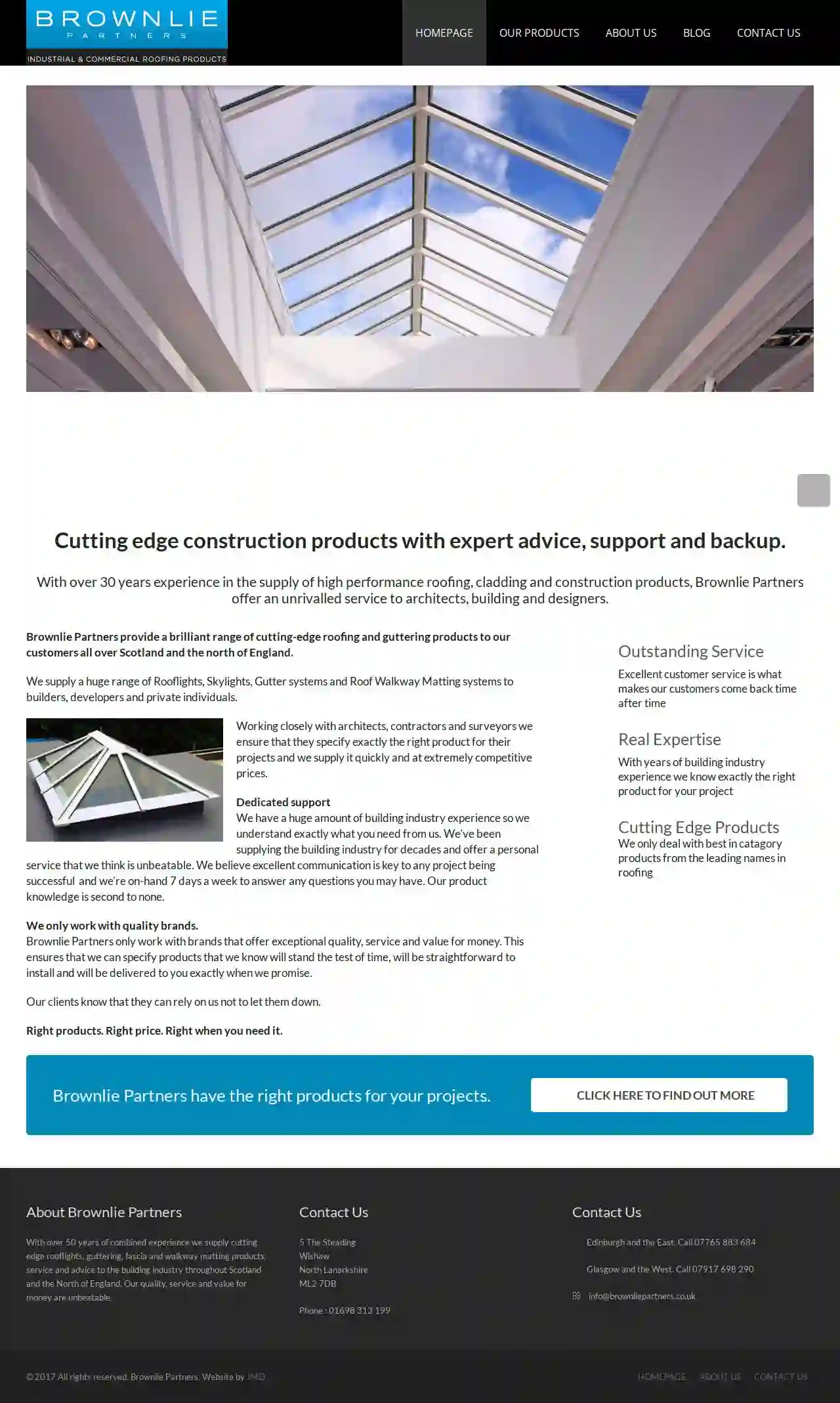
Brownlie Partners
5 The Steading, Wishaw, ML2 7DB, GBBrownlie Partners is a leading supplier of cutting-edge roofing, cladding, and construction products in Scotland and the North of England. With over 30 years of experience, we provide a comprehensive range of products, including rooflights, skylights, gutter systems, and roof walkway matting systems. We serve a diverse clientele, from architects and builders to developers and private individuals. Our commitment to quality, service, and value for money is unwavering. We partner with renowned brands that offer exceptional products, ensuring durability, ease of installation, and timely delivery. Our team of experts possesses extensive industry knowledge and is dedicated to providing personalized support and guidance throughout your project. We understand the importance of clear communication and are readily available to answer any questions you may have. At Brownlie Partners, we pride ourselves on our exceptional customer service, real expertise, and cutting-edge product offerings. We strive to be your trusted partner for all your roofing and construction needs.
- Services
- Why Us?
- Gallery
Get Quote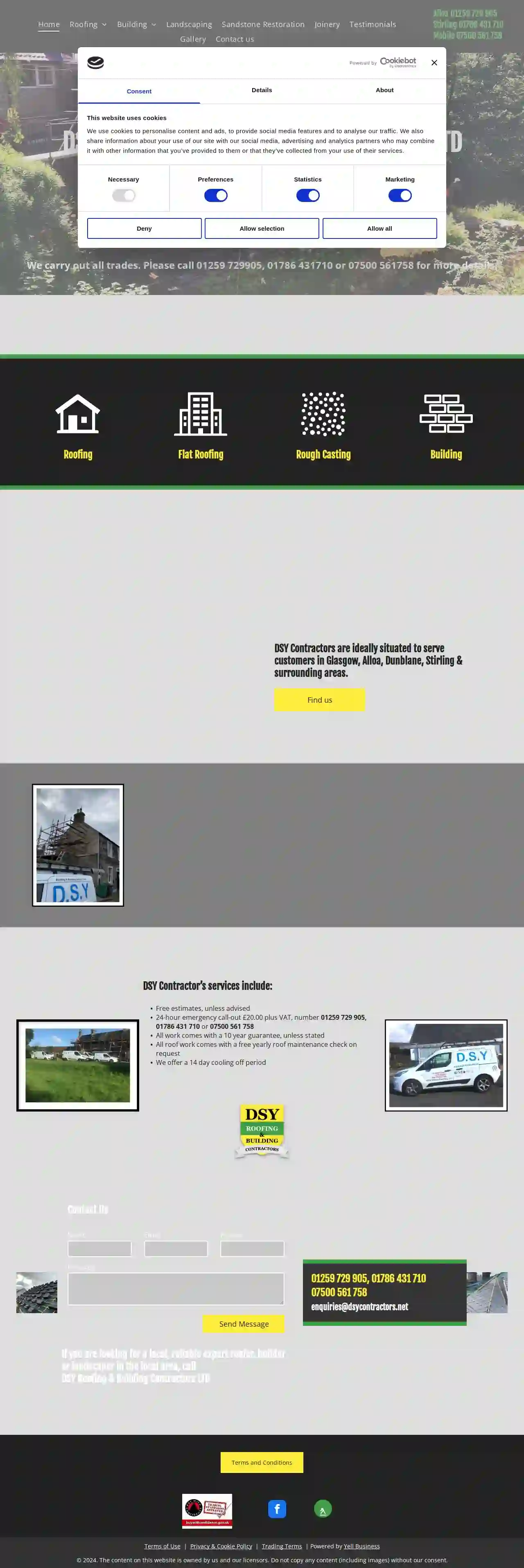
DSY Roofing & Building Contractors Ltd
4.947 reviewsFalkirk, GBDSY Roofing & Building Contractors Ltd is a company registered in Scotland. We are a master craftsmen roofer, builder, and landscaper, carrying out all trades. We install new roof systems, tile or slate, and carry out roof repairs, chimney work repairs. We also offer flat roofing services, rough casting, and building services. Our team is based in Alloa and serves customers in Glasgow, Alloa, Dunblane, Stirling, and surrounding areas. We are a member of The Guild of Master Craftsmen and have 30 years of experience in the trade. We offer a comprehensive range of services, including free estimates, 24-hour emergency call-out, and a 10-year guarantee on all work. We also offer a 14-day cooling-off period and a free yearly roof maintenance check on request.
- Services
- Why Us?
- Accreditations
- Our Team
- Testimonials
- Gallery
Get Quote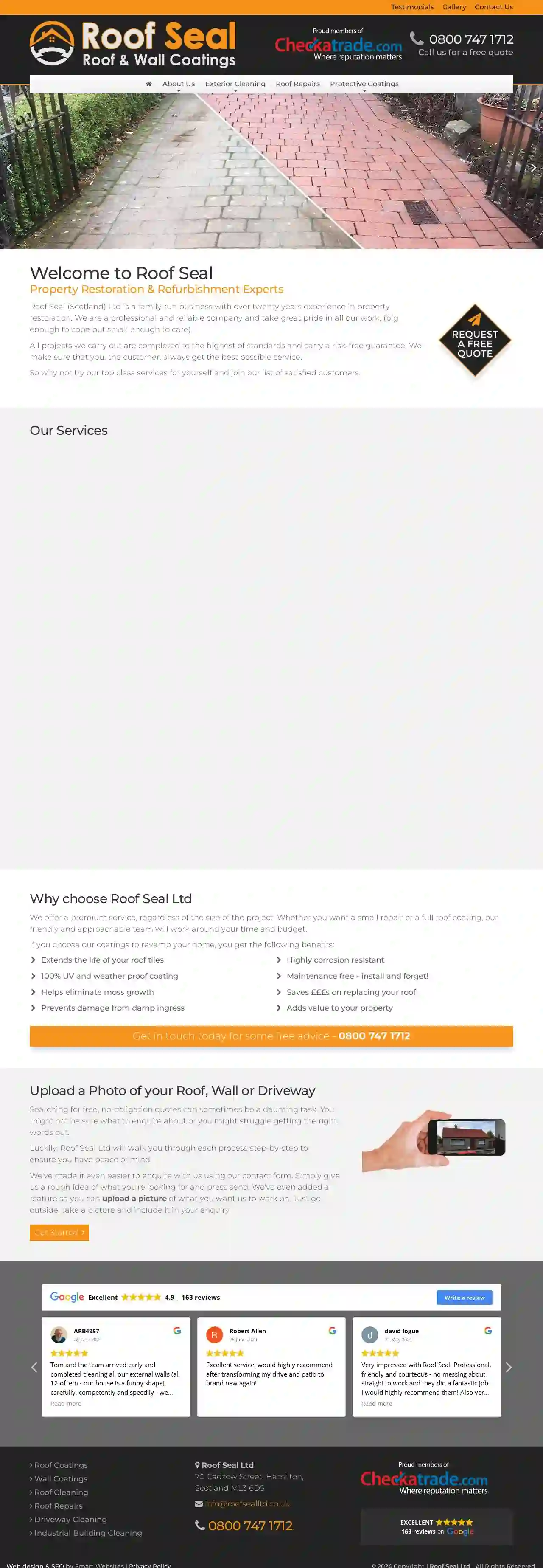
Roof Seal (Scotland) Ltd
4.9150 reviews70 Cadzow Street, Hamilton, ML3 6DS, GBRoof Seal (Scotland) Ltd is a family run business with over twenty years experience in property restoration. We are a professional and reliable company and take great pride in all our work, (big enough to cope but small enough to care).All projects we carry out are completed to the highest of standards and carry a risk-free guarantee. We make sure that you, the customer, always get the best possible service.So why not try our top class services for yourself and join our list of satisfied customers.
- Services
- Why Us?
- Gallery
Get Quote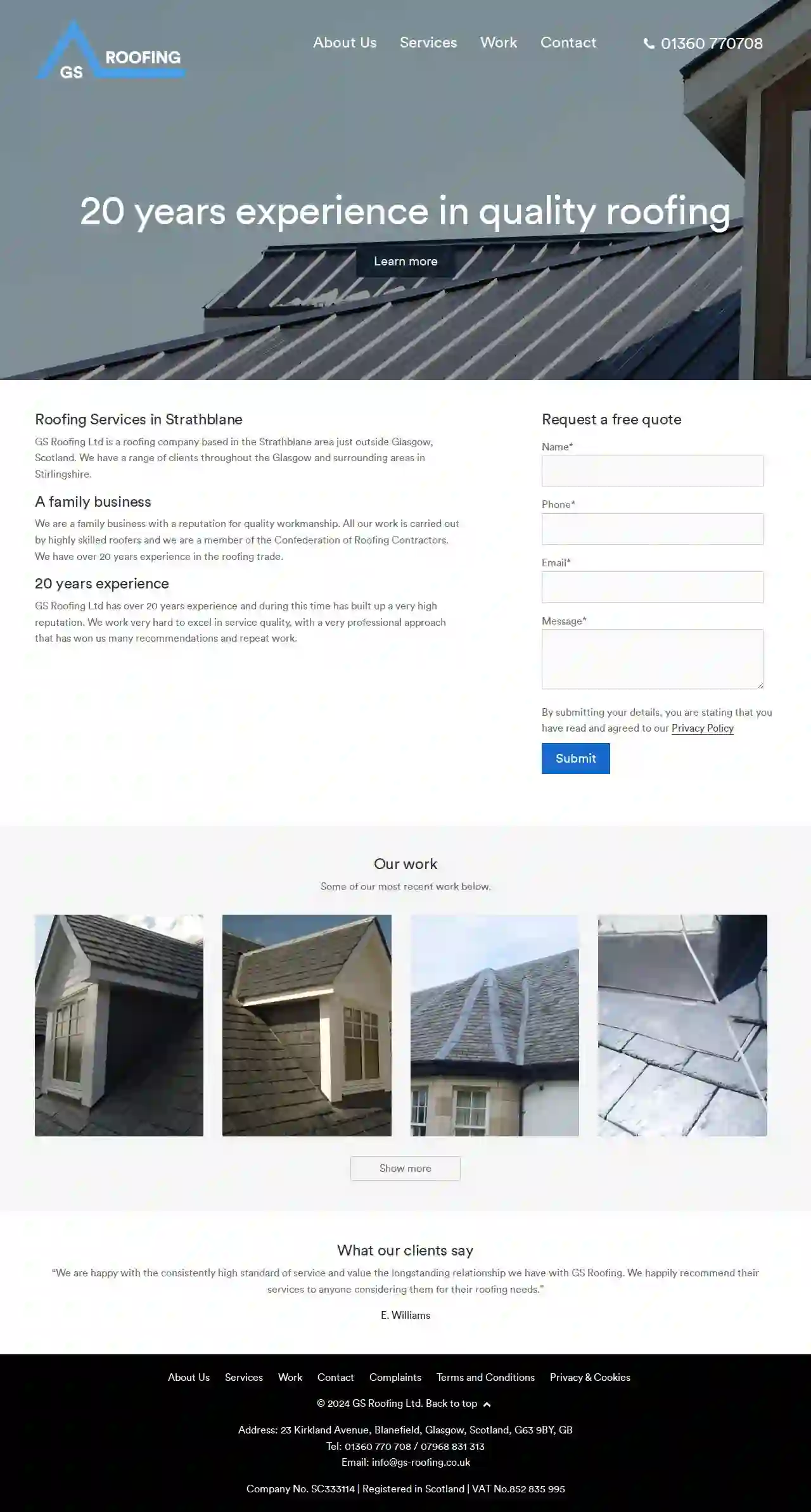
G S Roofing Ltd
48 reviews23 Kirkland Avenue, Blanefield, G63 9BY, GBGS Roofing Ltd is a family-run roofing company based in Strathblane, just outside Glasgow, Scotland. We serve a range of clients throughout Glasgow and the surrounding areas in Stirlingshire. With over 20 years of experience in the roofing trade, we have built a strong reputation for quality workmanship and a professional approach. Our team of highly skilled roofers is dedicated to providing excellent service and exceeding customer expectations. We are proud members of the Confederation of Roofing Contractors, ensuring we adhere to the highest industry standards. At GS Roofing Ltd, we understand the importance of a reliable and durable roof. That's why we use only the best materials and techniques to ensure long-lasting results. Whether you need a new roof installation, repairs, or maintenance, our team has the expertise to handle any project, big or small. We are committed to providing our clients with transparent pricing, clear communication, and a stress-free experience. Contact us today for a free quote and let us help you protect your home or business with a quality roof from GS Roofing Ltd.
- Services
- Why Us?
- Accreditations
- Our Team
- Testimonials
- Gallery
Get Quote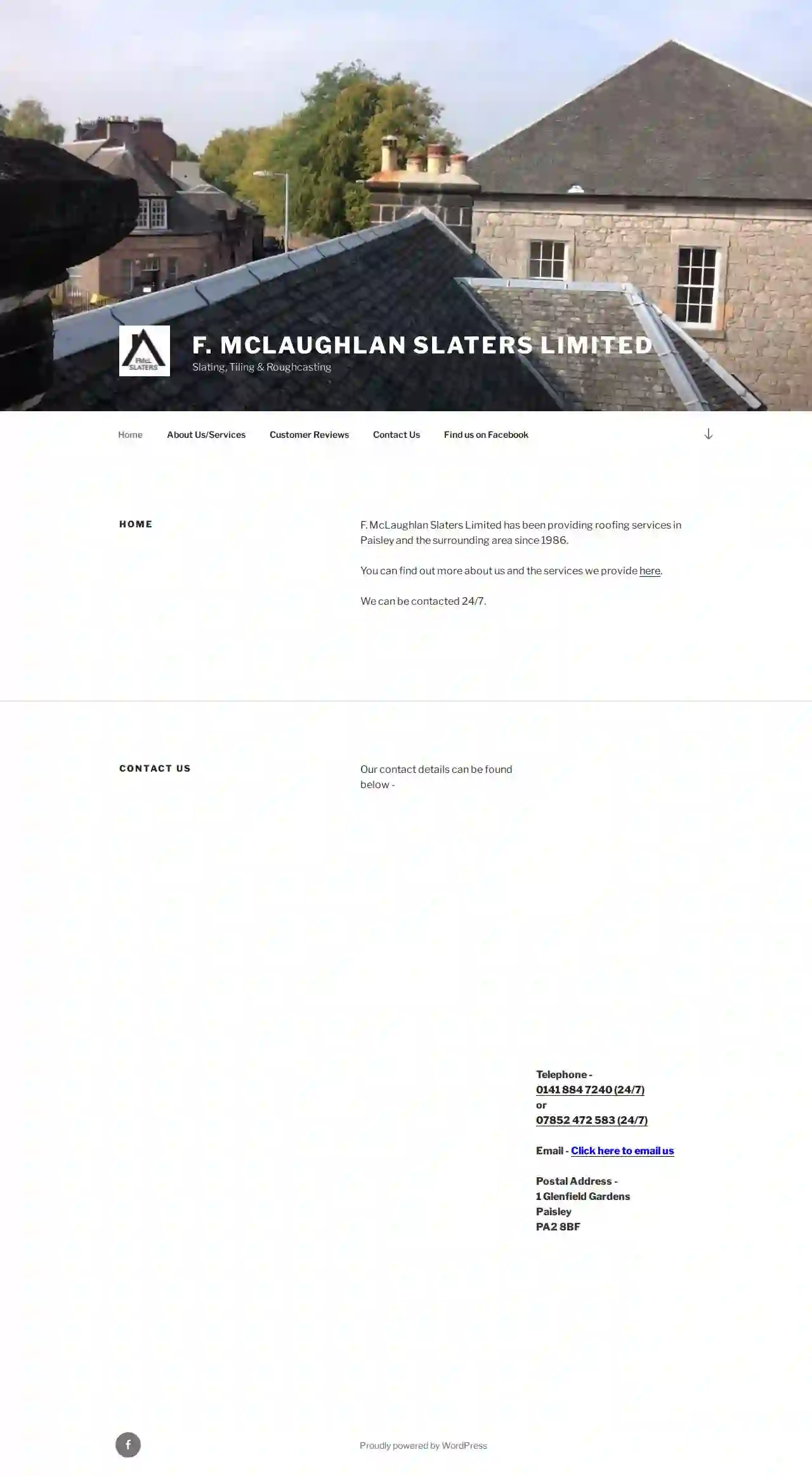
F McLaughlan Slaters Ltd
512 reviews1 Glenfield Gardens, Paisley, PA2 8BF, GBF. McLaughlan Slaters Limited has been providing roofing services in Paisley and the surrounding area since 1986. You can find out more about us and the services we provide here. We can be contacted 24/7.
- Services
- Why Us?
- Gallery
Get Quote
WTM services
52 reviewsGBWTM SERVICES is a leading and reputable Roofing and roughcasting Company serving Scotland. Since opening for business, we've taken a comprehensive approach to project management, providing our clients with a wide range of services to cover their needs. We cover all areas of Glasgow, Edinburgh, Dundee and Fife and surrounding areas. We offer expert advice on all things related to roofing, and our team of skilled and experienced roofers has been serving property owners in Glasgow, Edinburgh, Fife and Dundee and surrounding borders for over a decade. Our roofing and roughcasting specialists are knowledgeable and can offer solutions to a variety of roof-related problems, including new roof constructions, roof replacements, roof repairs, flashing repairs, guttering, fascia, and soffit board services and roughcasting. With the rising cost of energy, it is essential to undertake timely roof replacements and repairs to maintain your property's energy efficiency and save on energy bills. At WTM SERVICES, we understand this and offer free expert advice and competitive quotes from our friendly team. We take pride in providing exceptional roofing services while maintaining a price advantage over other roofing companies in Glasgow and beyond. Our 5-star reviews and referrals are a testament to our commitment to our customers. We are dedicated to offering speedy and high-quality solutions to all your roofing and roughcasting problems. As your committed "ROOFERS NEAR ME" service in Glasgow, we understand that roofing problems can be urgent, particularly during periods of adverse weather. Therefore, we aim to provide quick and reliable services.
- Services
- Why Us?
- Gallery
Get Quote
JRC Jordan Roofing Co Ltd
510 reviews123 Main Street, Oxford, OX1 1AA, GBJRC Jordan Roofing is a leading roofing company in the UK, providing high-quality roofing services to both residential and commercial clients. With years of experience and a team of skilled professionals, we offer a wide range of roofing services, including re-roofing, new builds, roof repairs, and maintenance. Our team is dedicated to providing excellent customer service and ensuring that our clients receive the best possible results. We are fully accredited by the National Federation of Roofing Contractors (NFRC) and have a proven track record of delivering high-quality roofing solutions.
- Services
- Why Us?
- Accreditations
- Gallery
Get Quote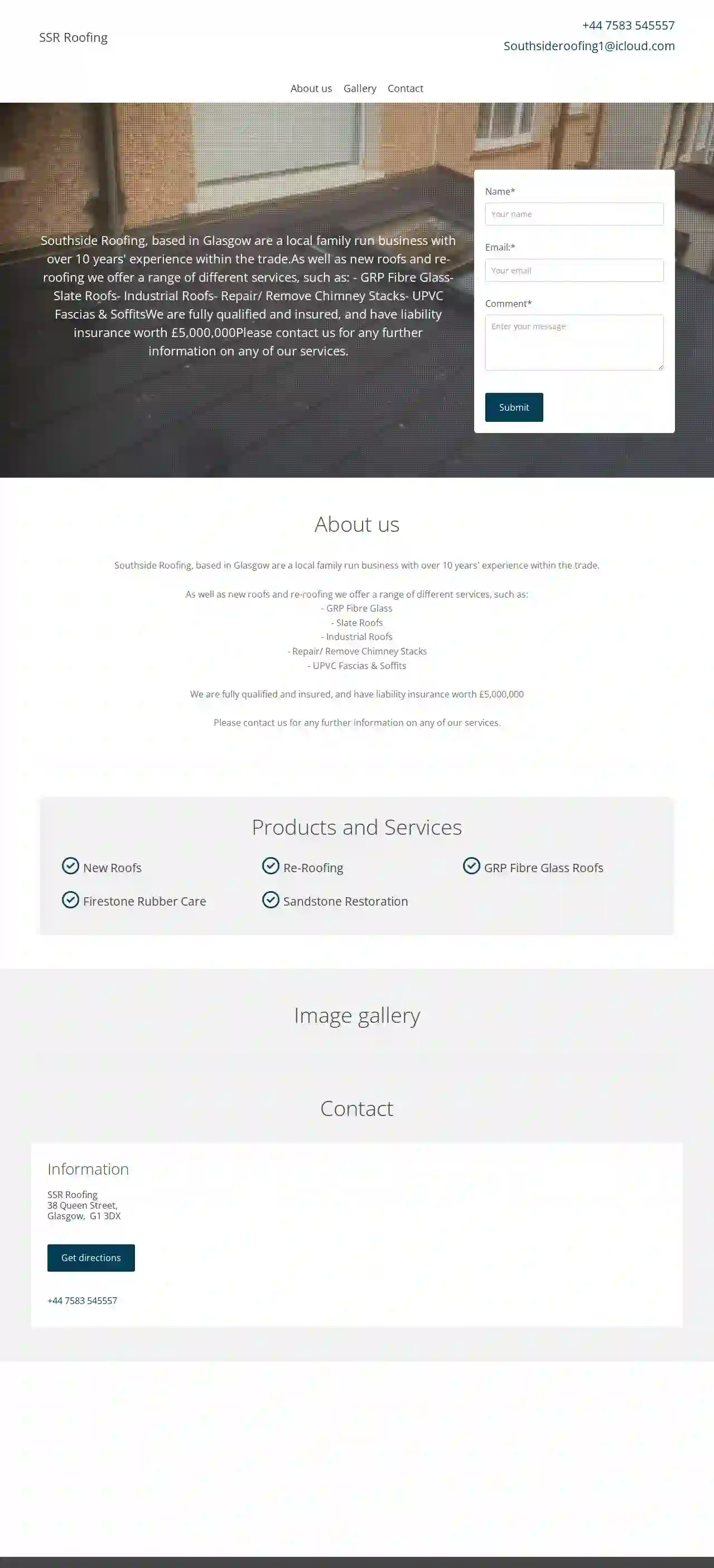
SSR Roofing
2.58 reviews38 Queen Street, Glasgow, G1 3DX, GBSouthside Roofing, based in Glasgow are a local family run business with over 10 years' experience within the trade. As well as new roofs and re-roofing we offer a range of different services, such as: - GRP Fibre Glass - Slate Roofs - Industrial Roofs - Repair/ Remove Chimney Stacks - UPVC Fascias & Soffits We are fully qualified and insured, and have liability insurance worth £5,000,000 Please contact us for any further information on any of our services.
- Services
- Why Us?
- Gallery
Get Quote
MM Roofing, Building & Landscapes
4.713 reviews62 Galston Road, hurlford, Kilmarnock, Ayrshire, KA1 5HY, GBMM Roofing, Building and Landscapes is a professional, reliable Roofing, Building and Landscapes company with unparalleled expertise in the industry. We offer quality services that are competitively priced. It is our aim to provide the best possible service at fair prices for all of our customers. Our roofers, landscapers and builders off our services in Paisley, Renfrewshire, Glasgow and Ayrshire have a combined 20 years’ experience. Have a look at our gallery or contact us today for more information. When you need a roof, it is important that the roofer providing services are dedicated to giving an outstanding quality roofing service. That’s why our team provides all types of roof repair and maintenance for your home or business in order make sure its lasting power reaches beyond today. We focus on improving what was before by going above-and-beyond with every job we do so no matter how old your current system may be – ours can save time, money & headaches while still meeting standards set forth today! Our landscaping and building services are also first class, from driveways and fencing to roughcasting and garden walls you will not be disappointed with our service. Contact us or read our reviews today.
- Services
- Why Us?
- Testimonials
- Gallery
Get Quote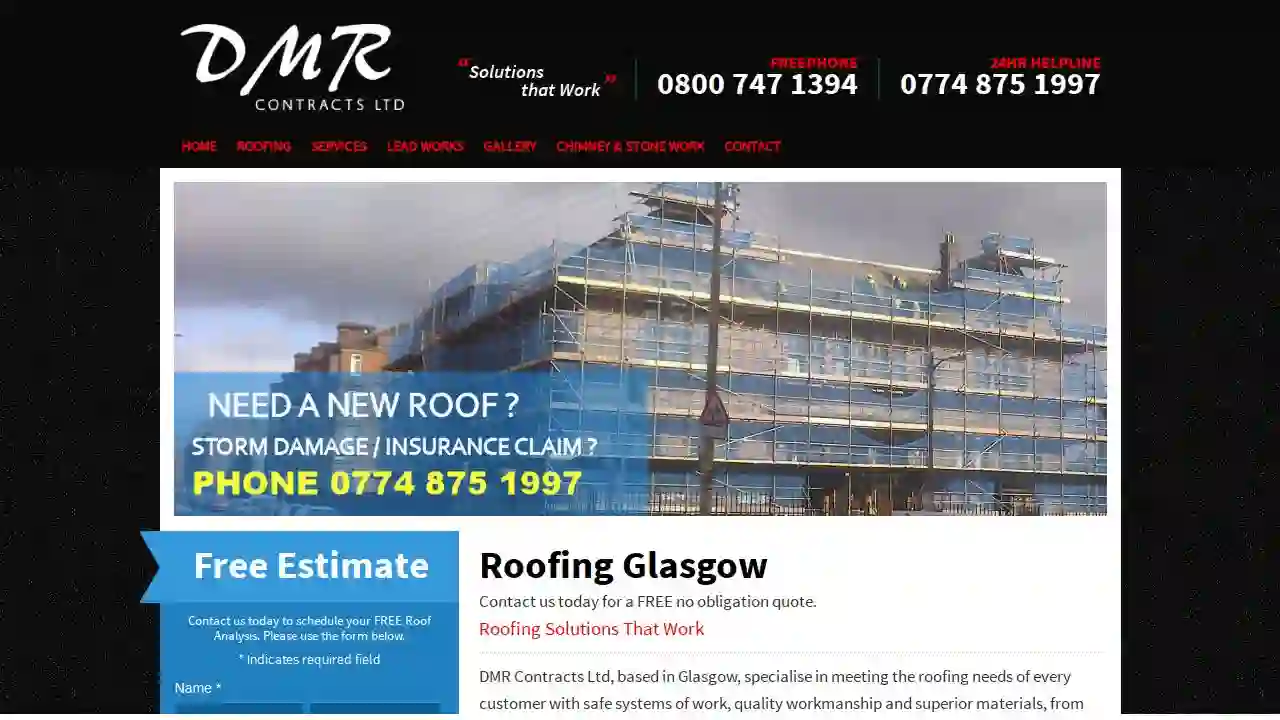
Glasgow's Finest Roofing Company
32 reviews100 Holloway Head, Birmingham, B1 1AA, GBDMR Contracts is a leading provider of commercial construction services in the UK. With over 20 years of experience, we have a proven track record of delivering high-quality projects on time and within budget. Our team of expert professionals is dedicated to providing our clients with the best possible service. We offer a wide range of services, including new build, refurbishment, fit-out, and maintenance. We are committed to using the latest technologies and techniques to ensure that our projects are completed to the highest standards. At DMR Contracts, we understand that every project is unique. That's why we take the time to get to know our clients and their needs. We work closely with them throughout the entire project lifecycle, from initial concept to final handover. Our goal is to exceed our clients' expectations and build long-lasting relationships. We are proud to have a strong reputation for quality, reliability, and customer satisfaction. Our commitment to excellence has earned us the trust of many leading businesses in the UK.
- Services
- Why Us?
Get Quote
Over 12,314+ Roofers on our platform
Our roofing pros operate in Stirling and beyond!
Roofyng.co.uk has curated and vetted the Best Roofers in and around Stirling. Find a reliable business today.
Frequently Asked Questions About Roofing Companies
- Roof size and complexity
- Roofing material chosen
- Local labor costs
- Accessibility of the roof
- Removal of existing roofing
- Additional features (skylights, chimneys, etc.)
- Asphalt Shingles: Popular, affordable, available in various styles (3-tab, architectural, etc.)
- Metal Roofing: Durable, long-lasting, energy-efficient, available in panels, shingles, or tiles.
- Tile Roofing: Clay, concrete, or slate; known for longevity, durability, and aesthetic appeal.
- Flat Roofing: EPDM rubber, TPO, PVC, modified bitumen, or built-up roofing (BUR).
- Slate: Natural stone, extremely durable, expensive, requires expert installation.
- Wood Shakes or Shingles: Natural wood, aesthetically pleasing, requires regular maintenance.
What should I do with my old roof after replacement?
How much does a new roof cost in the UK?
What is a roof valley, and why is it important?
What are the different types of roofing materials?
What should I do with my old roof after replacement?
How much does a new roof cost in the UK?
- Roof size and complexity
- Roofing material chosen
- Local labor costs
- Accessibility of the roof
- Removal of existing roofing
- Additional features (skylights, chimneys, etc.)
What is a roof valley, and why is it important?
What are the different types of roofing materials?
- Asphalt Shingles: Popular, affordable, available in various styles (3-tab, architectural, etc.)
- Metal Roofing: Durable, long-lasting, energy-efficient, available in panels, shingles, or tiles.
- Tile Roofing: Clay, concrete, or slate; known for longevity, durability, and aesthetic appeal.
- Flat Roofing: EPDM rubber, TPO, PVC, modified bitumen, or built-up roofing (BUR).
- Slate: Natural stone, extremely durable, expensive, requires expert installation.
- Wood Shakes or Shingles: Natural wood, aesthetically pleasing, requires regular maintenance.